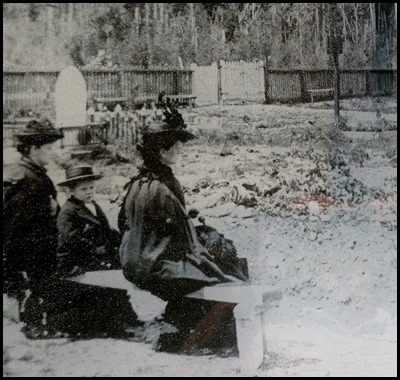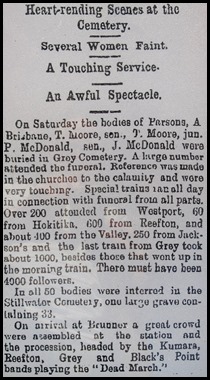Stillwater Cemetery

Beez Neez now Chy Whella
Big Bear and Pepe Millard
Wed 3 Sep 2014 22:57
|
Stillwater
Cemetery
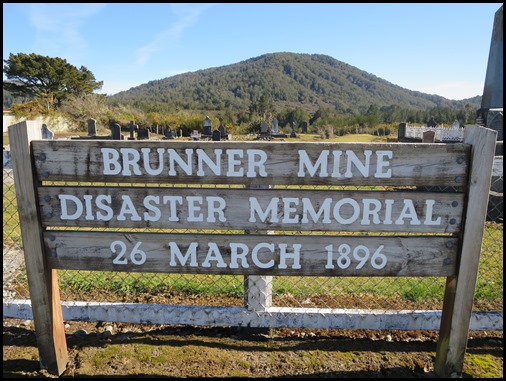 We had just turned right off the main
road and saw the very place we wanted to find. We had
planned to go to the Information Centre in Greymouth on our way through
tomorrow, to find out where Stillwater was. We wanted to visit as we had been to
the Brunner site and read so much about the people and the events that happened
on that tragic day at the mine.
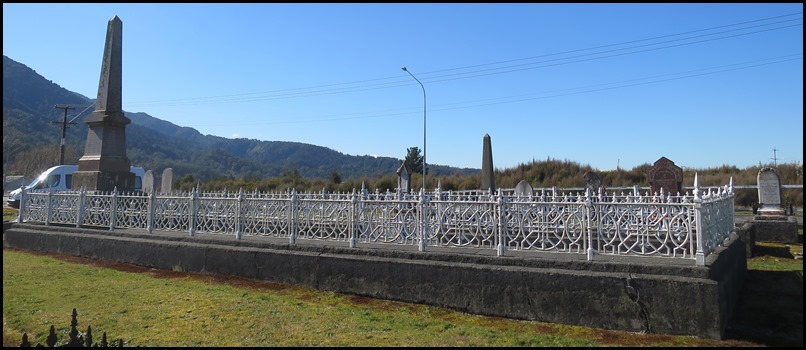 We walked straight to the mass grave of the Brunner Mine disaster victims.
The grave has a cenotaph with a list of names and ages
carved on it, and written there is a simple yet haunting inscription.
It reads: "Dedicated to the memory
of 65 miners who lost their lives by an explosion in the Brunner Mine, March 26,
1896. "Thirty-three are buried here. Erected by the
affectionate relatives and friends." The ages range from just fifteen to the
oldest at seventy two.
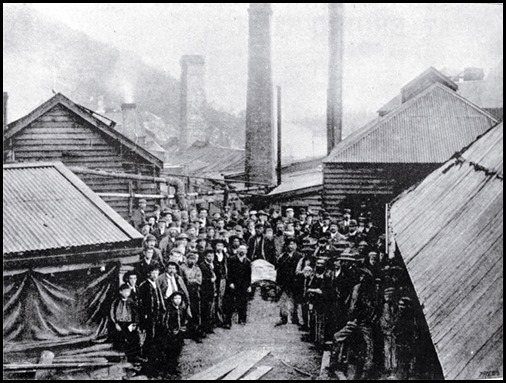 The funeral began with the first coffin being carried
out.
Round the clock rescue parties took
several days to unearth the bodies of the men, some being so badly mutilated
that only clothing or a distinguishing mark could make for identification. The
mine had been idle for four or five days and it was presumed that gas had
accumulated to a dangerous level. Fifty bodies are interred here at the
Stillwater Cemetery, one mass grave containing thirty three. The remainder were
buried in the Greymouth Cemetery.
 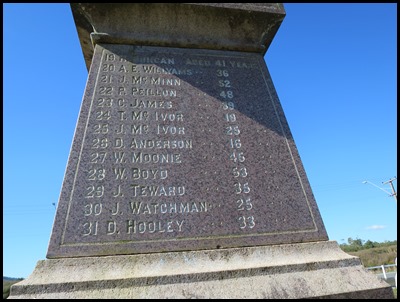 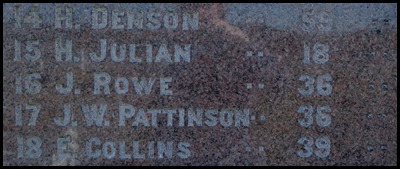  The names, ages and
grave position of the victims.
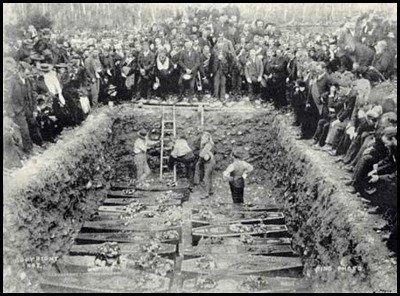
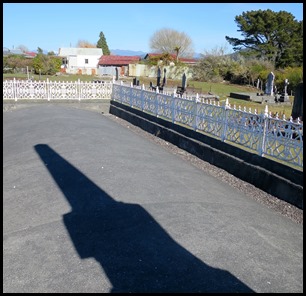 The burial. Numbers are etched over each victim in the concrete cover.
“The funeral was a
momentous occasion......that’s the best way to describe it. Attending were six
thousand persons – they came in hundreds and thousands from different
districts.” A funeral like no other. Amid the grief and sorrow carpenters had
rallied to prepare the coffins, while forty seamstresses worked around the clock
sewing yards of black cloth to suitably clothe the mourners in time for the
funeral. By the Sunday, just three days after the disaster a large funeral was
in progress. Most of the widows and children were transported with the coffins
the two and a half kilometres from Brunner to Stillwater by a special slow
train. Following on foot was a solemn procession of many hundreds of people
accompanied by Handel’s ‘Dead March from Saul’, performed by numerous local
bands. Other than the mass grave are several victims in private or family plots,
the rest in Greymouth.
The funeral procession as it passes through Stillwater township.
Widows take a moment beside the grave. The Wanganui Herald dated the 30th of March
1896.
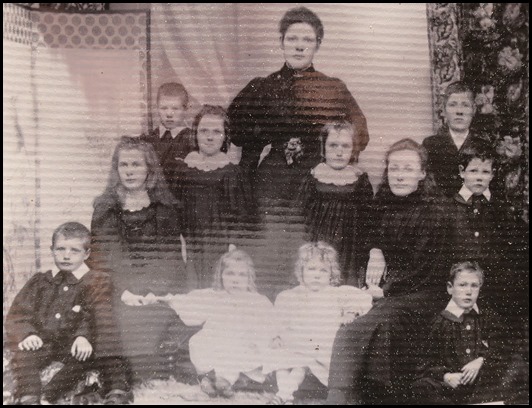 The orphaned Hunter
children.
7.
William Hunter was born at Crosshouse in Lanarkshire, Scotland in 1855 and
married Allison in her home town of Sanquhar, Dumfriesshire. The couple had
emigrated to New Zealand where their fourth child, William John was born. They
were residents in Brunnerton – at Wallsend, from where William senior went to
work as a hewer. For the twelve children of William and Allison Hunter the
mid-1890’s was a disastrous time. Their thirty six year old mother died in
October 1894 from a uterine haemorrhage when the eldest child Jean, was just
fifteen years old and baby Charlotte only one. When their forty one year old
father was killed in the mine disaster two years later, the children became
orphans. The two eldest girls were employed in Christchurch as domestic
servants, they joined the younger children and went with them to an aunt,
Elizabeth Thomson, in Oamaru who brought them up. The Hunters were the
largest family to be affected by the Brunner Mine disaster.
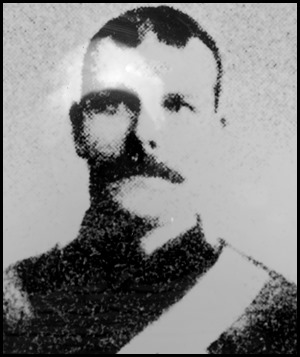 10. John Maunder
Langdon was a yeoman from Newbury, Berkshire. He, his wife Harriet and son John
immigrated to New Zealand in 1864. John senior was running a hotel at Māori
Gully on the West Coast from 1866. When Harriet, his new daughter Mary and John
junior reached Māori Gully, they were the only ‘white’ children living there. In
1870 the family settled on five hundred acres near the junction of the Arnold
and Grey Rivers, just up river from Brunner. Here, John Langdon senior ran a
ferry service across the Grey River, known as Langdon’s Ferry. John Langdon junior – a hewer, lost his life in the Brunner
Mine disaster of 1896. John’s sister, Mary, recalls how she and her mother were
left to deal with the grief.
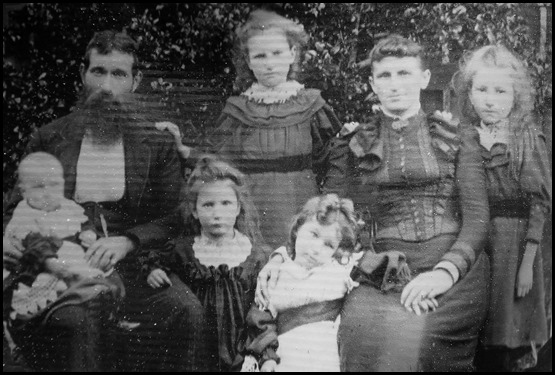 12. Peter McMahon – hewer aged thirty
five, was born in Belfast, Ireland in about 1861 and came to New Zealand
when he was fifteen years of age. Details about his early working life are
unknown. In about 1887 he became the partner of Hannah Fishwick of Hokitika, and
by 1893 he was a coal miner at Brunner. Hannah’s life had been hard, her family
was poor and she entered the world of domestic service early. She had already
had a daughter when she started life with Peter and by the time of Peter’s death
the couple had three daughters and an eleven month old son. In 1900, Hannah
married bushman – timber worker, George Mark, with whom she had a further five
children. She died in Palmeston North in 1951 and was survived by nine
children.
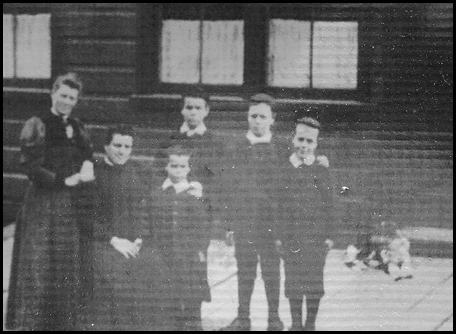 Elizabeth
Willyams and four of her children with a friend outside their Wallsend
home, 1897.
20. Alfred Ernest
Willyams was born in Roche, Cornwall in 1857 and arrived with his parents and
four other siblings in New Zealand in 1875. He married Elizabeth Mason in
Christchurch in 1879. Alfred was a gold miner near Hokitika before working on
the Midland Railway line. The family moved to Brunnerton in 1890 when Alfred
found employment as a hewer in the Brunner Mine. When thirty nine year old
Alfred was killed in the mine disaster he left behind Elizabeth, his wife and
six children; a fifteen year old daughter and sons from fourteen to five
years.
The Willyams’ were not wealthy.
Alfred ‘s estate was worth less than one hundred pounds and the family’s future
would have appeared grim. Elizabeth was one of the thirteen widows involved in
disaster litigation against the Brunner Mine owners. She was awarded seven
hundred and fifty pounds – three hundred and fifty six thousand, two hundred and
fifty today, for her family and moved back to Christchurch in 1898 where she
died in 1927. About one third of the widows remarried after the disaster but
Elizabeth was not one of them.
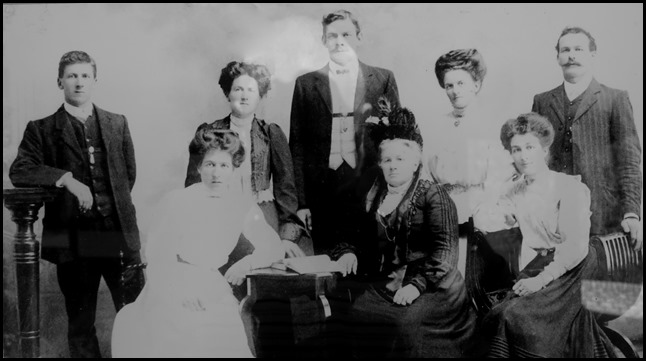 24 and
25. Mary McIvor, centre front, with some members of her family,
circa 1913. Her second son James had to take responsibility for his mother and
remaining family after the deaths of his father and two brothers. Of Scottish
ancestry, two of the McIvor lads had immigrated to
New Zealand in 1875 as farm labourers. They soon picked up coal mining work in
Otago. Four years later their parents migrated with five other children. They
eventually moved to Brunnerton. In 1890 Mary was widowed with nine children at
her side, then just six years later she lost two of her sons in the Brunner Mine
disaster. Mary was at the forefront of the compensation claims directed at the
mine owners.
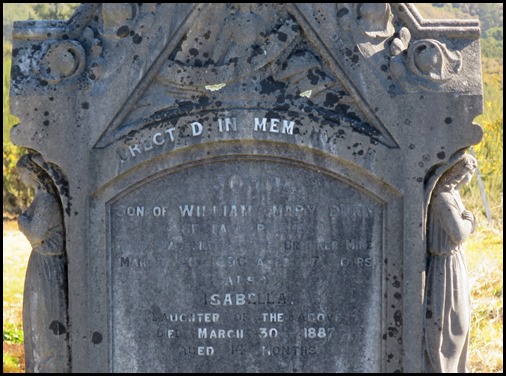 J Dunn –
a hewer, is buried in a family plot, his
sister Isabella died in 1887, aged fourteen months is with him.
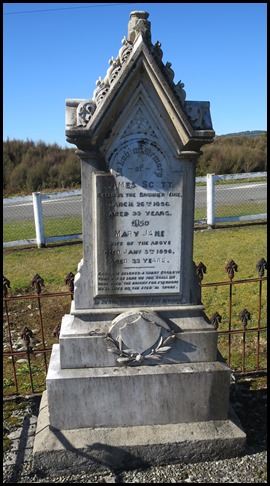  James Scott
- a hewer, is buried in a grave with Mary Jane, his
wife who died just a couple of months before the disaster.
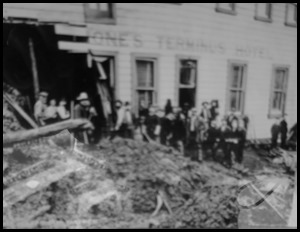 A landslip wiped out the Terminus Hotel killing owner Henry Jones as well as
seven children of the Cosgrove family whose house was smothered.
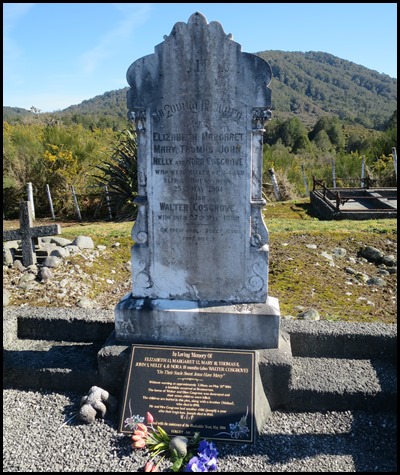  The saddest grave belongs to the Cosgrove family.
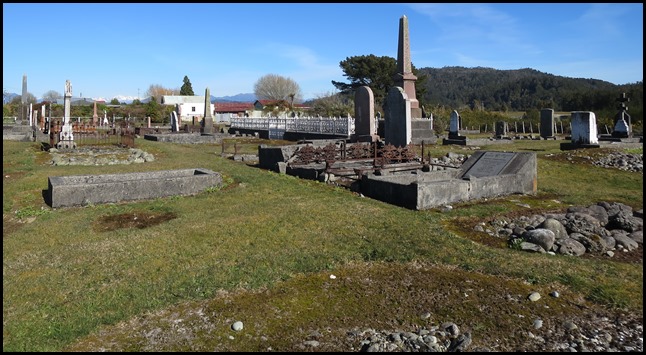 Some graves here are unmarked or in poorly shape, here are some of the
others.
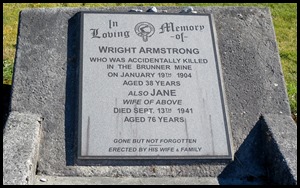  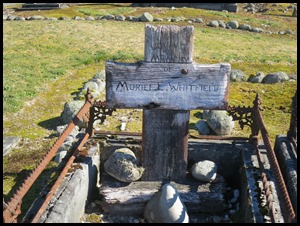 Wright, a different Brunner Mine accident. Bobby and
Muriel.
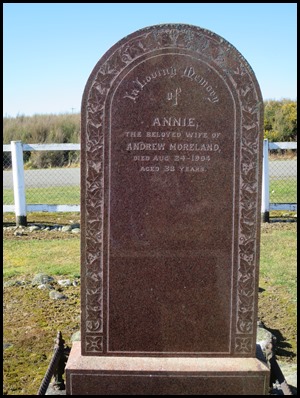 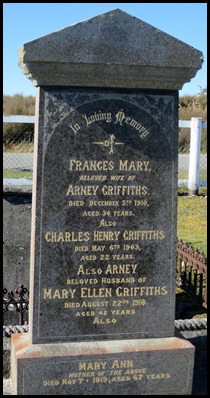 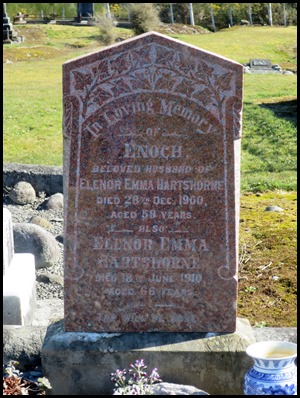 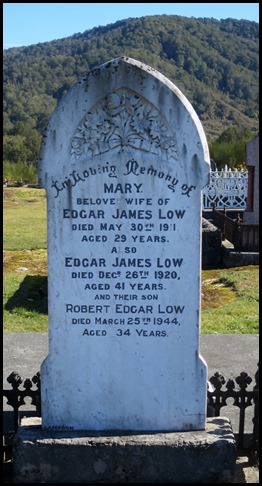 ALL IN ALL SUCH SAD
STORIES
I’VE NEVER SEEN SO MANY GRAVES OF SO MANY YOUNG
PEOPLE |

